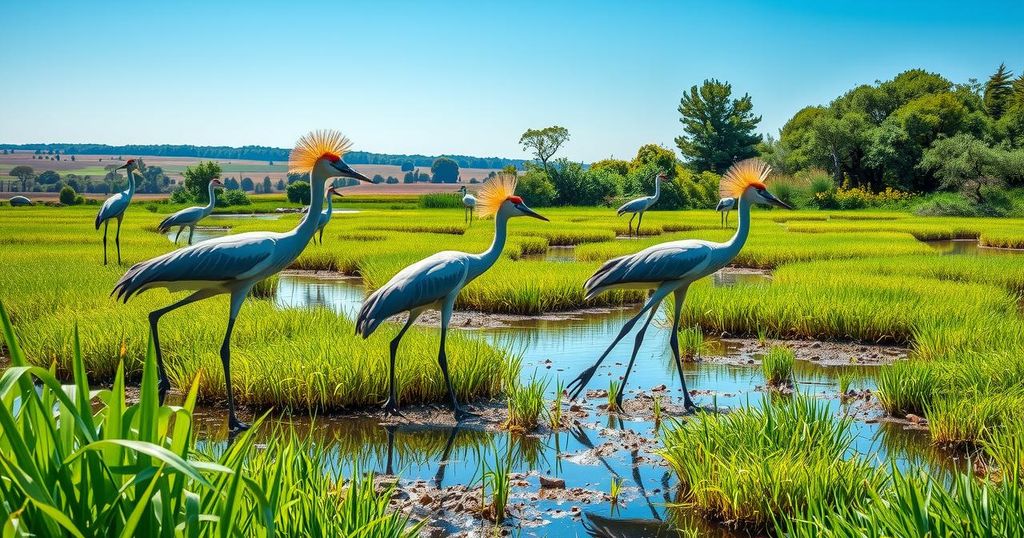Rwanda’s Crowned Cranes Make a Remarkable Comeback

- Rwanda’s crowned cranes were once more common as pets than in the wild.
- The decline of gray crowned cranes was rooted in habitat loss and exotic pet capture.
- Olivier Nsengimana’s RWCA launched successful campaigns for crane rehabilitation.
- The crane population in Rwanda has nearly tripled since 2017 through conservation efforts.
- Local communities are involved in monitoring wetland health and crane welfare.
- Nsengimana has expanded conservation efforts across East Africa, emphasizing collaboration.
Decline of Gray Crowned Cranes in Rwanda
Rwanda’s gray crowned cranes were, not too long ago, teetering on the edge of extinction. About a decade ago, there were more of these majestic birds living in private homes than in their natural wetlands, primarily due to significant habitat loss and pressure from the exotic pet trade. The dramatic decline in their population meant they were vanishing from the very landscapes they once ruled, with, at one point in 2017, a sobering realization that captured cranes outnumbered those free in the wild.
Conservation Efforts Spark Crane Recovery
Thanks to the efforts of Olivier Nsengimana, a dedicated veterinarian and founder of the Rwanda Wildlife Conservation Association (RWCA), the gray crowned cranes are now making a remarkable comeback. His organization launched an innovative campaign focused on amnesty for bird owners. Instead of punishment, the RWCA encouraged citizens to voluntarily return captive cranes, which propelled a surge in bird handovers and ultimately fostered a healthier population in the wild.
Evolving Conservation Beyond National Borders
The resilience of Rwanda’s crane population is evident as it has nearly tripled since 2017, reflecting a community-driven approach to conservation. The protection of critical wetlands, essential for breeding, has also seen significant improvement, supported by local communities trained by RWCA. Moreover, Nsengimana’s vision has crossed borders, bolstering conservation efforts in Uganda, Tanzania, and soon Burundi, emphasizing the need for regional cooperation.
Rwanda’s gray crowned cranes, once symbols of loss, have shown a tremendous resurgence due to the tireless efforts of Olivier Nsengimana and the RWCA. The shift from private ownership to wild reintegration illustrates the potential of community involvement in conservation. With continuing regional collaborations, the future of these birds—and their wetlands—looks promising.






